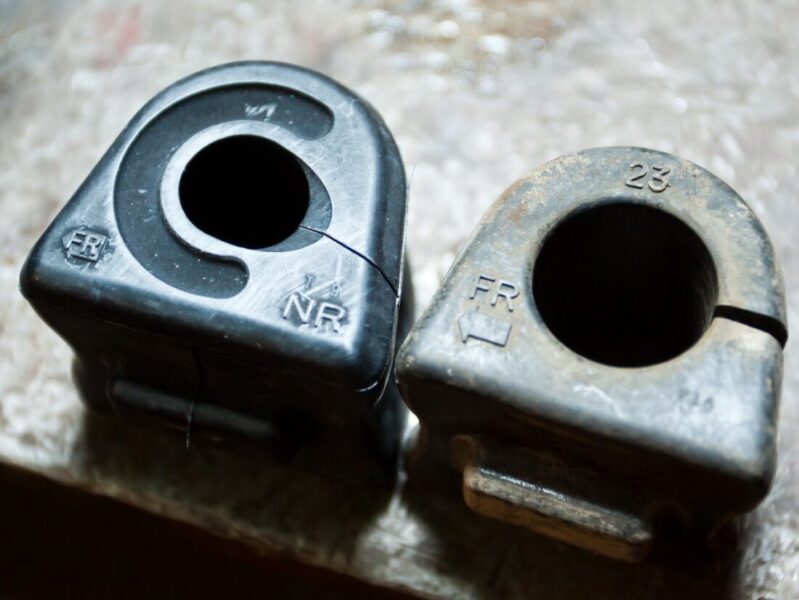
How and why to change stabilizer bushings
Content
The lateral stability system of a modern car provides a parallel position of the car body during cornering, braking or acceleration. The stabilizer itself is a rod, which is attached to the subframe on one side, and to the wheel mounting lever on the other. A MacPherson strut especially needs such a detail.
The rack provides a static camber of the vehicle wheels. When turning, this parameter changes, which affects the patch of contact of the wheel with the road - the car tilts, from which the pressure increases on one part of the tire and decreases on the other. Due to the design of the McPherson strut, the only thing that can be done to stabilize the car on the track is to reduce the roll when cornering.
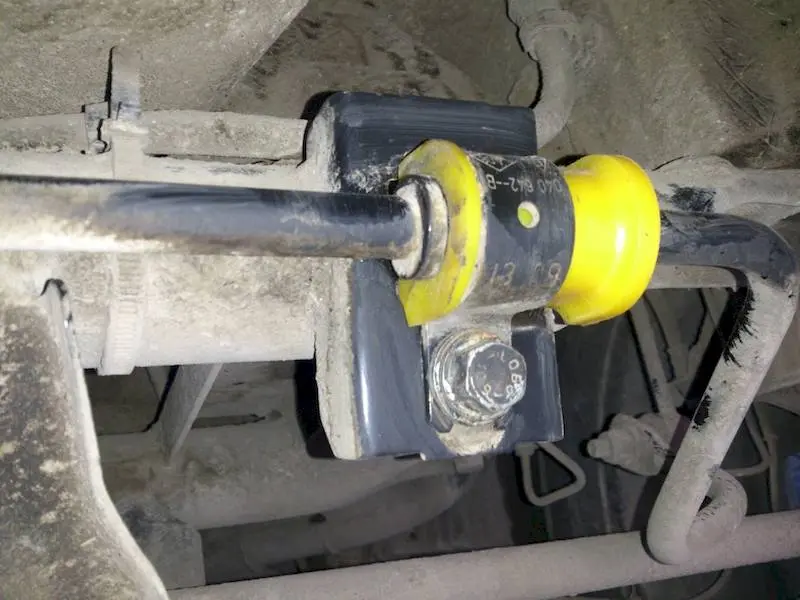
For this purpose, anti-roll bars of various modifications are used. The part works in a very simple way. When the car enters a turn, the lever works like a torsion bar - opposite ends twist in different directions. This creates a force to counteract strong tilting of the body.
The peculiarity of the stabilizer is that it should not be fixed tightly - its ends must move (otherwise the suspension will not differ from the dependent spring). To eliminate the unpleasant squeak or knock of metal parts, rubber bushings have been added to the system design. Over time, these elements need to be replaced.
When is the cross stabilizer bushings replaced?
Malfunctions in this node are identified during routine diagnostics. Usually, rubber elements need to be changed every 30 thousand run, as they deteriorate - they crack, break or deform. Experienced motorists recommend changing the kit immediately, rather than each sleeve separately, despite the fact that they may still be suitable for use outwardly.
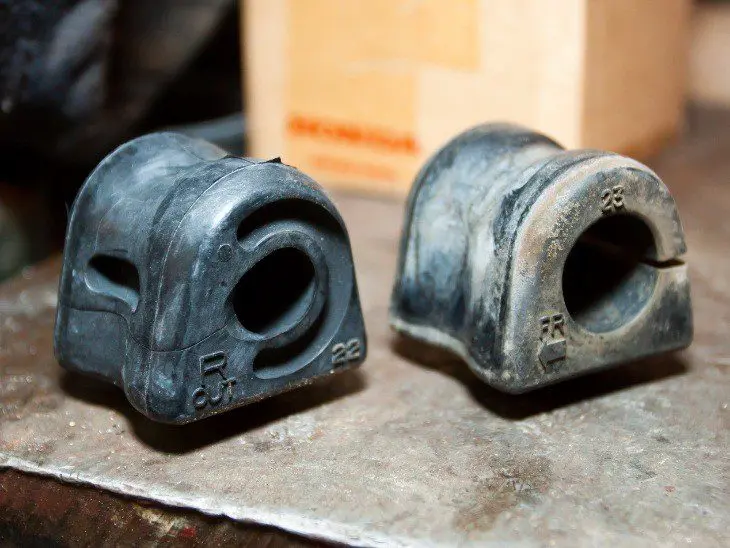
Here are some signs that will indicate replacement of parts between maintenance:
- On bends, the steering wheel has backlash (read about other reasons for backlash here);
- When turning the steering wheel, beating is felt;
- On bends, the body tilts more than before. This is often accompanied by a squeak or thump;
- Vibration and extraneous noise are felt in the suspension;
- Vehicle instability;
- On straight sections, the car pulls to the side.
If at least some signs appear, the car must be immediately sent for diagnosis. The problem is often solved by replacing the bushings. If the effect does not go away even after this procedure, it is worth paying attention to other systems whose malfunction has similar symptoms.
Replacing the front stabilizer bushings
The procedure for most cars when replacing this part is almost identical. The only difference is in the design features of the suspension and chassis of the model. How to replace the stabilizer bar on a VAZ 2108-99, read separate review. Here is the step by step procedure:
- The car is jacked up, lifted on a lift or driven onto an overpass;
- The front wheels are removed (if they interfere with the work);
- Remove the stabilizer mounting bolts;
- The lever is disconnected from the rack;
- The bolts of the fixing bracket are unscrewed;
- Where a new bushing is installed, dirt is removed;
- The inner part of the sleeve is lubricated with silicone paste (a cheaper option is to use liquid soap or detergent). Lubrication will not only extend the life of the part, but also prevent the rapid appearance of problems accompanied by squeaky bushings;
- The rod is installed in the bushing;
- The car is assembled in reverse order.
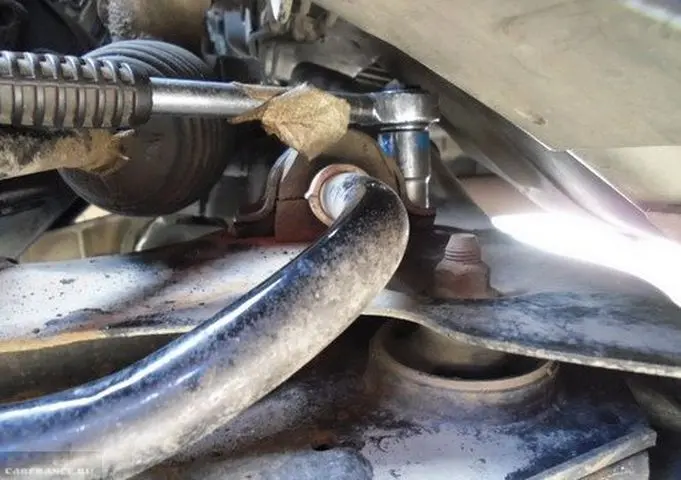
In the case of repairing the rear stabilizer, the procedure is identical, and in some cars it is even easier due to the peculiarity of the suspension design. It is not uncommon for the bushing to change when it starts to squeak.
Squeak of stabilizer bushings
Sometimes a squeak is observed immediately after replacing parts that do not have time to wear out. Let's consider for what reasons this can happen with new elements, and what a possible solution to the problem.
Causes of squeaks
The squeak of rubber stabilizer elements can appear either in dry weather or in severe frosts. However, such a malfunction has individual reasons, often associated with the operating conditions of the vehicle.
Possible reasons include the following:
- Cheap bushings - the material from which they are made is of low quality, which leads to a natural squeak when a load occurs;
- In the cold, rubber coarsens and loses its elasticity;
- Frequent driving in heavy mud (the problem is often observed in SUVs overcoming swampy areas);
- A design feature of the vehicle.
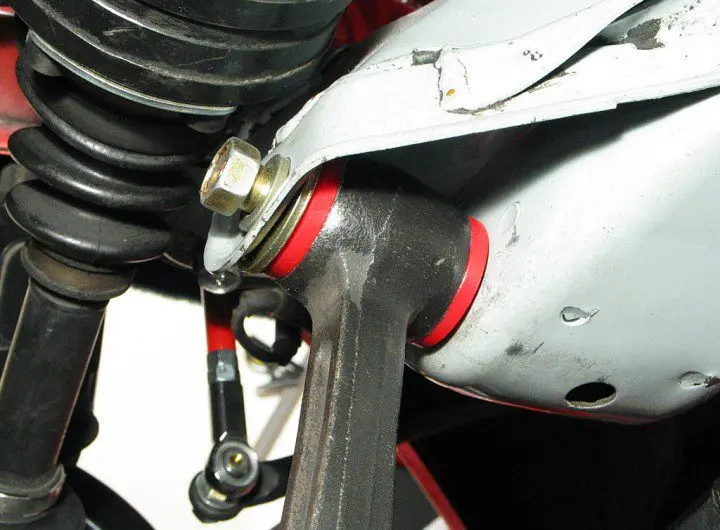
Methods for solving the problem
There are several options for solving the problem. If it is associated with the poor quality of the sleeve, then either you will have to endure until the next replacement, or replace the part with a better analogue.
Some owners lubricate rubber with a special grease. However, in most cases, this only aggravates the situation, because the oily surface becomes dirty much faster, which leads to accelerated wear of the element.
Manufacturers often discourage the use of grease because it interferes with the function of the bushing. It must firmly hold the rod in the seat so that it does not dangle, ensuring the rigidity of the structure. The lubricant makes it easier to move the stabilizer in the bushing, from which it scrolls in it, and when sand grains hit, the squeak becomes even stronger.
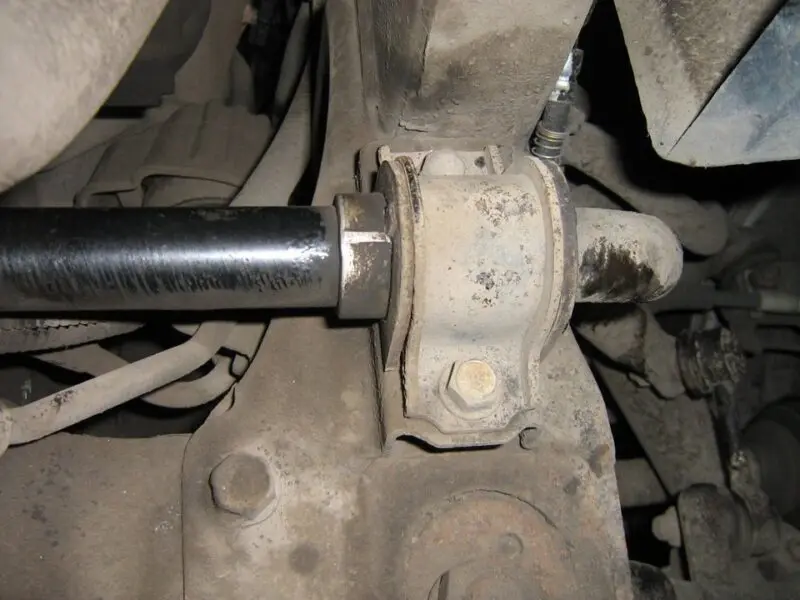
A creak in the new bushing may be due to the fact that the rubber has not yet rubbed into the metal part. After a couple of weeks, the effect should disappear. If this does not happen, the part must be replaced.
To prevent squeaking from appearing in the new bushing, the car owner can seal the stabilizer seat with a cloth or an additional layer of rubber (for example, a piece of bicycle tube). Polyurethane bushings are available for some vehicles. They are more durable and reliable, and do not tan in the cold.
Description of the problem for specific vehicles
Malfunctions in this unit depend on the design features of the car's suspension. Here is a table of the main causes of squeaking bushings and options for eliminating them in some car models:
| The model of car: | The cause of the problem: | Solution option: |
| Renault Megane | Sometimes an inappropriate bushing is used as the model may have a standard or heavy duty suspension. They use different stabilizers | When buying a part, specify what is the diameter in the lever. When installing, use a detergent so that during installation the sleeve does not deform |
| Volkswagen Polo | Associated with the peculiarity of the bushing material and operating conditions | The squeak can be eliminated by replacing it with a polyurethane model. There is also a budget solution - to place a piece of used timing belt between the bushings and the car body so that its teeth are on the side of the bushing. It is also possible to install a bushing from another car, for example, Toyota Camry |
| Lada Vesta | Due to changes in the strut mountings, the suspension travel has increased compared to the manufacturer's earlier models, which leads to more cranking of the stabilizer | One solution is to shorten the suspension travel (make the car slightly lower). The manufacturer also recommends using a special silicone lubricant (you cannot use oil-based products, as they destroy rubber parts). This grease will not wash off and will not collect dirt. |
| Skoda Rapid | The owners of such cars have already come to terms with the natural noise in these details. As with the Polo models, in many cases a slight creak is a constant companion of the gimbal. | Some, as an alternative to the original WAG bushings, use parts from other models, for example, from Fabia. Often it helps to replace the standard bushing with a repair one, the diameter of which is one millimeter less. |
Many manufacturers make parts with anthers, so the bushings do not creak. The presence of these elements provides protection against moisture and dirt on the assembly. If such modifications are available for a specific car, it is better to use them, even considering that they will cost more than their classic counterparts.
Here is a detailed video of how the bushings are replaced on cars of the VAZ family:
Questions and answers:
How long are stabilizer bushings? The stabilizer bushings change on average after 30 thousand kilometers or when the signs described in the article appear. Moreover, it is recommended to change the kit immediately.
How to understand if the stabilizer bushings are knocking? By ear, the wear on these bushings is extremely difficult to determine. Usually their knocking hits the floor. Often this effect is similar to torn bushings. The wheels must be under load while checking the hubs.
What are the stabilizer bushings? They differ in the shape of the attachment of the stabilizer itself and in the material. There are rubber or polyurethane bushings. the difference between these materials in terms of service life and price.
How to check the stabilizer bushings correctly? In addition to visual inspection, you need to make an effort on the stabilizer near the attachment point (pull strongly in different directions). The appearance of knocks or squeaks is a symptom of worn out bushings.


One comment
Jan Wichniarz
Great description.